#Pericles Prince of Tyre
Explore tagged Tumblr posts
Text
so @socialshakespeare announced they’re doing pericles, prince of tyre next month, so both bc of that and because it won the most recent poll, here’s pericles!
#pericles#pericles prince of tyre#completing the canon#shakespeare#william shakespeare#theatre#theater#plays#i promise this will be the last one of 2024#i just wanted to knock out a few during winter break#this is specifically the stratford festival production from a few years back#stay tuned!
9 notes
·
View notes
Text
Shakespeare at the end of one of his romances: And the lost princess... is returned Me, every single time: [gasps] Oh my God the lost princess is returned
#THANK GOD SHE'S BACK!!!!!!#for the sake of not jumbling up phrasing im gonna pretend miranda is a princess. may as well be#chat#text post#shakespeare#romances#I LOVE THE ROMANCES!!!!!! THIS BLOG SUPPORTS TRAGICOMEDY#miranda#the tempest#perdita#the winter's tale#imogen#cymbeline#marina#thaisa#pericles#pericles prince of tyre#YOUR TROPES WILL NEVER TIRE ME!!!!!!! I LOVE BELIEVING IN MAGIC AND LOVE AND THE JUSTICE OF THE UNIVERSE RESETTING ALL THINGS RIGHT
36 notes
·
View notes
Text
Shakespeare Weekend
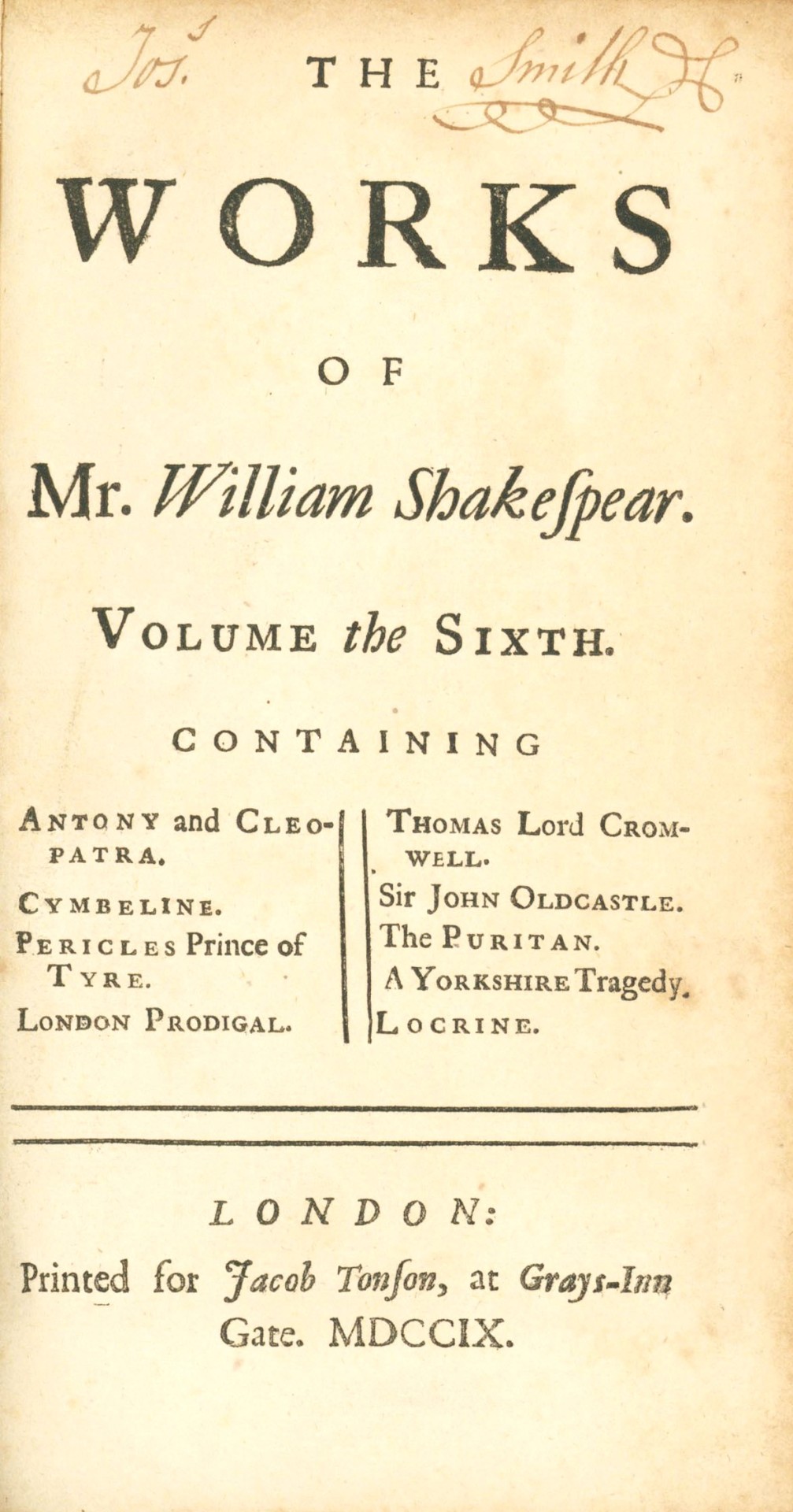


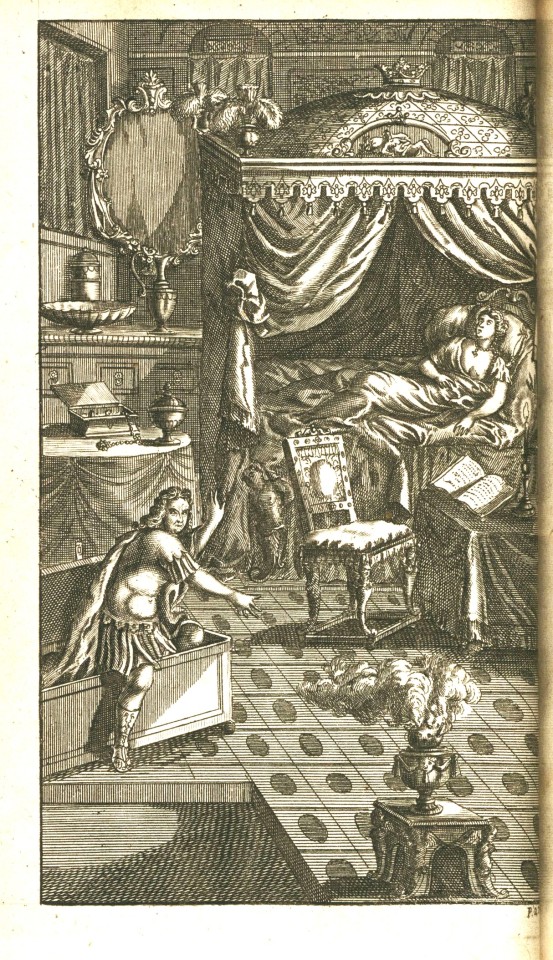
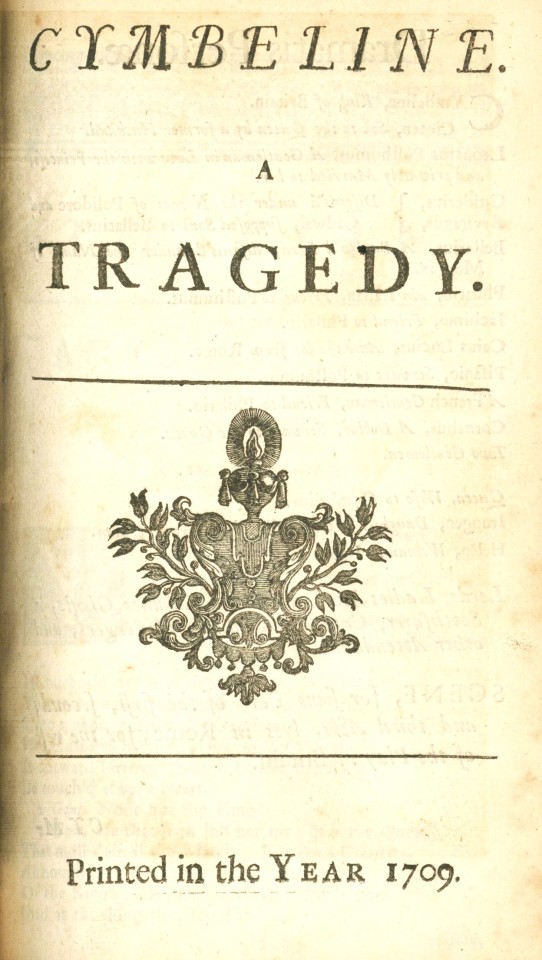
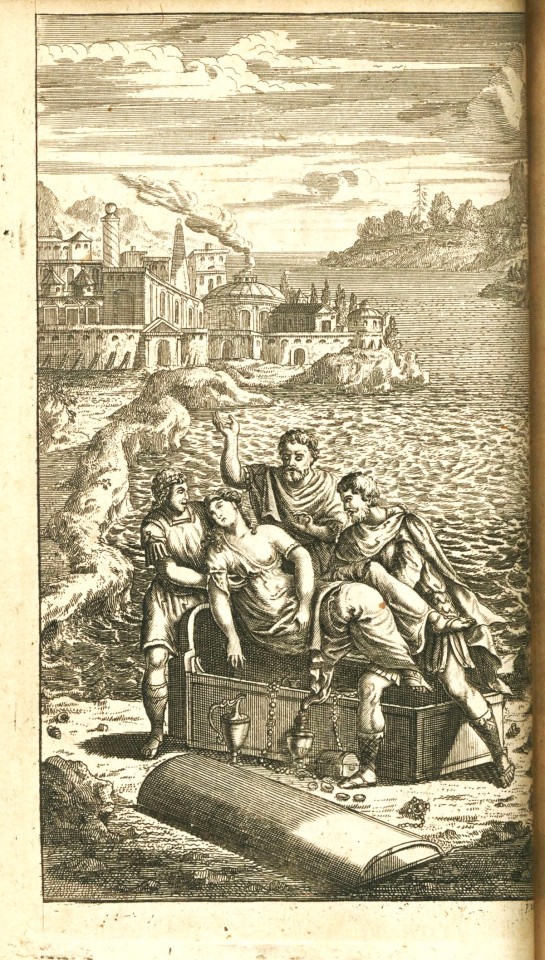
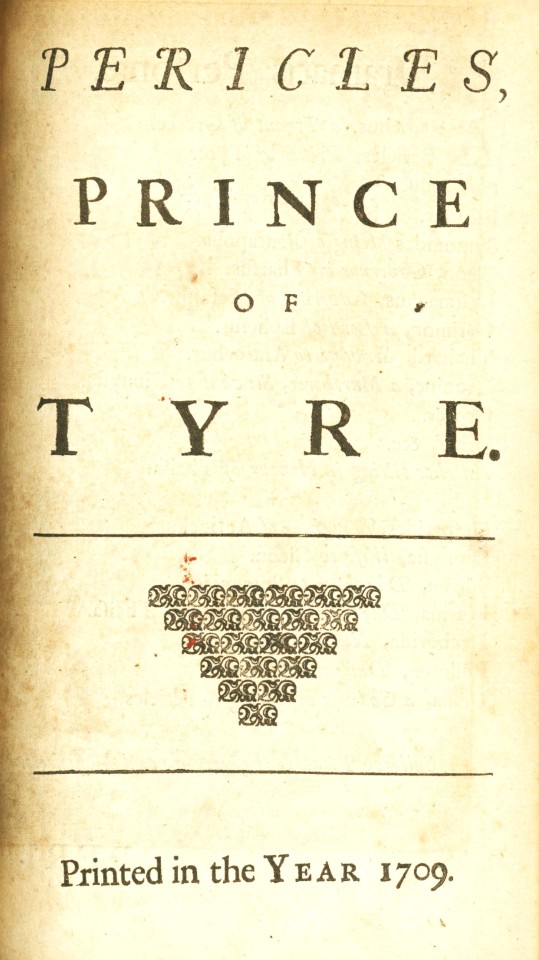

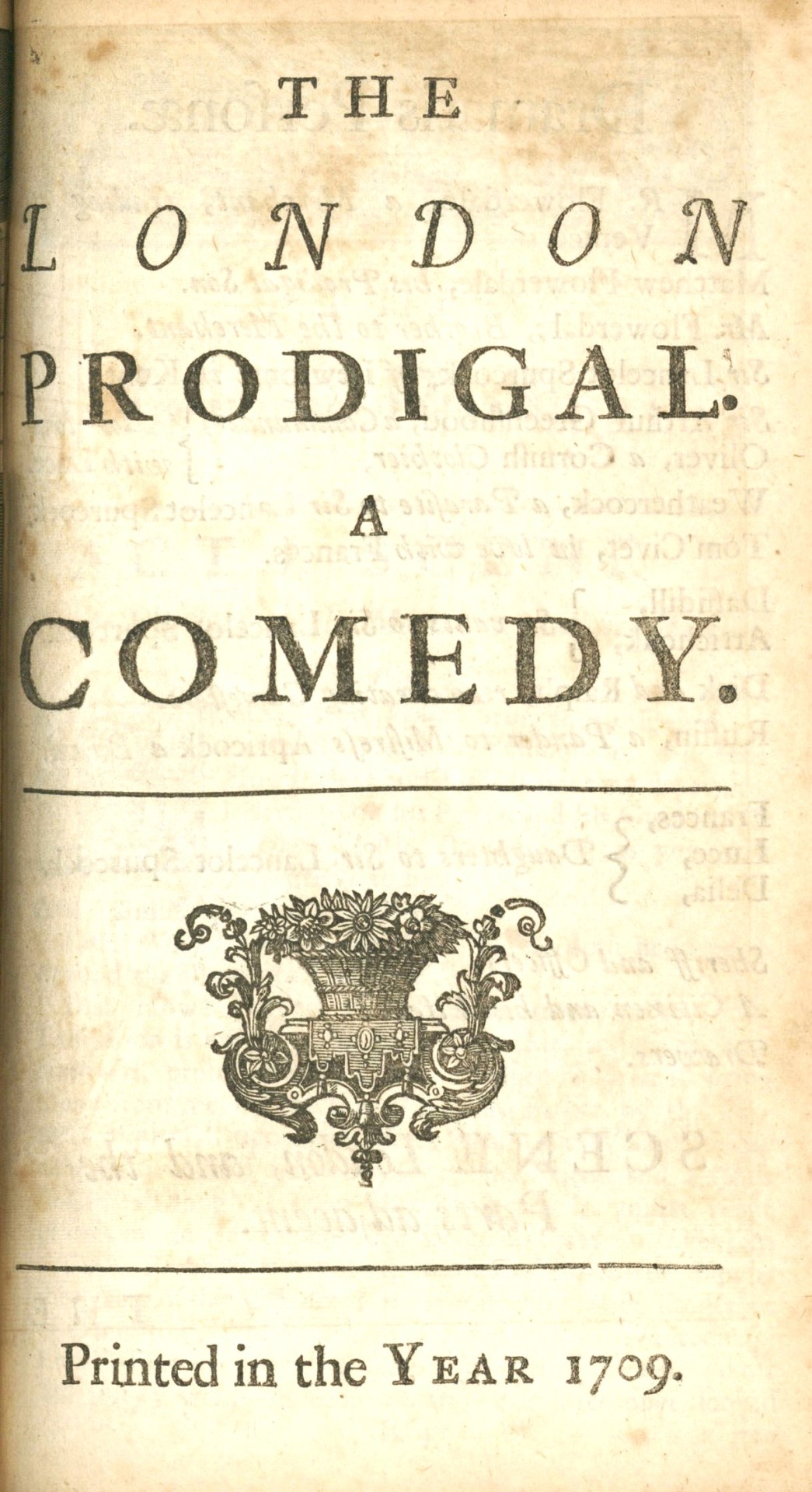

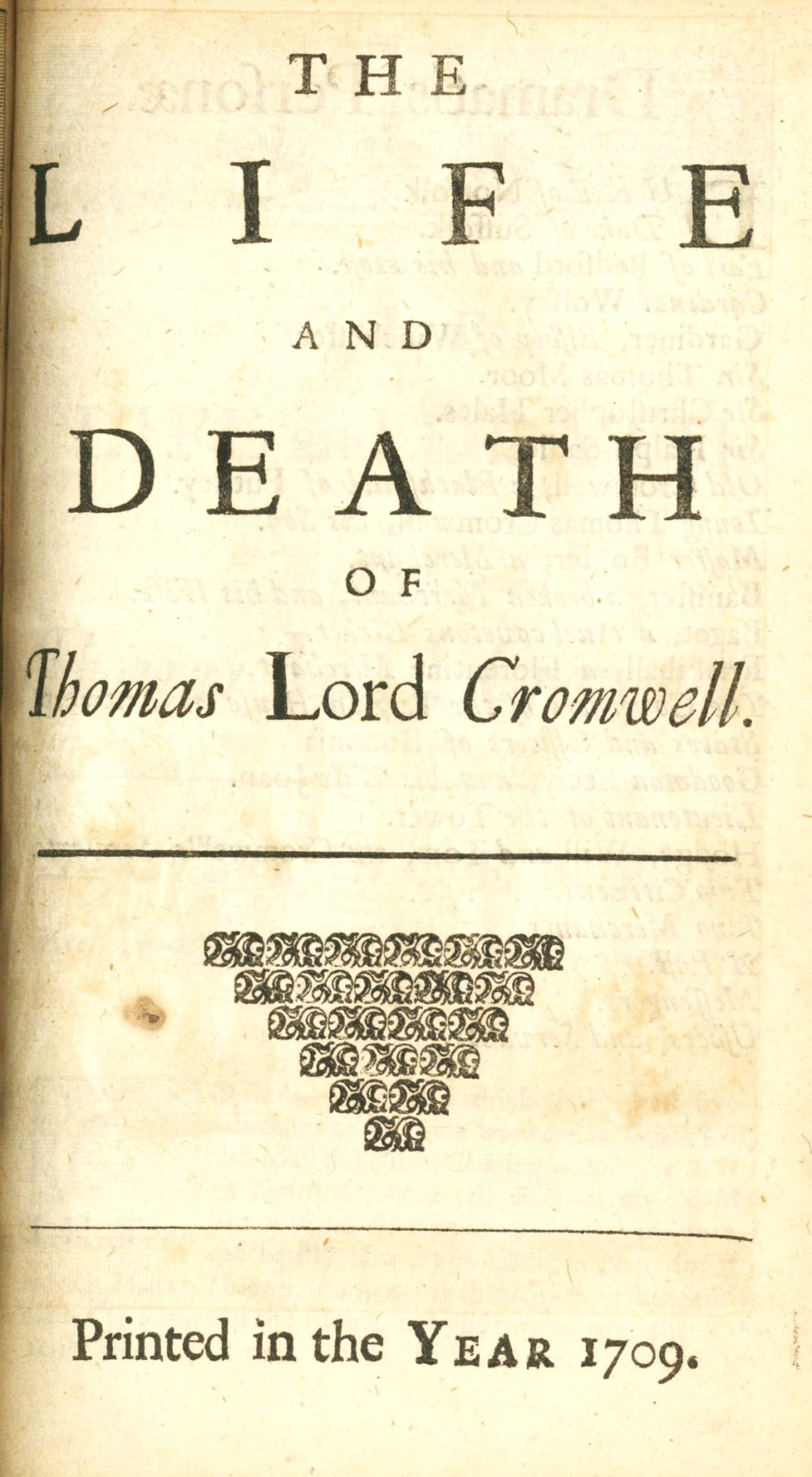
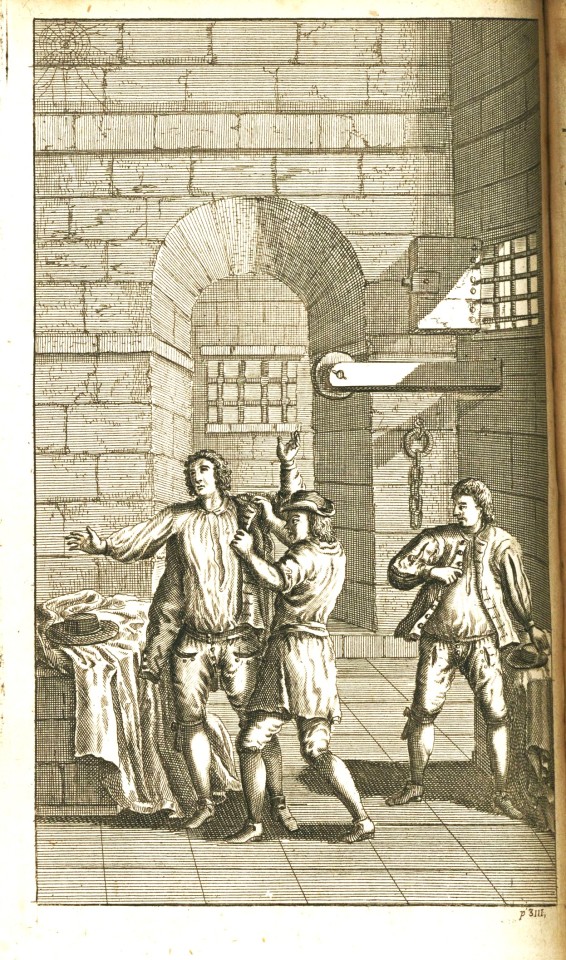

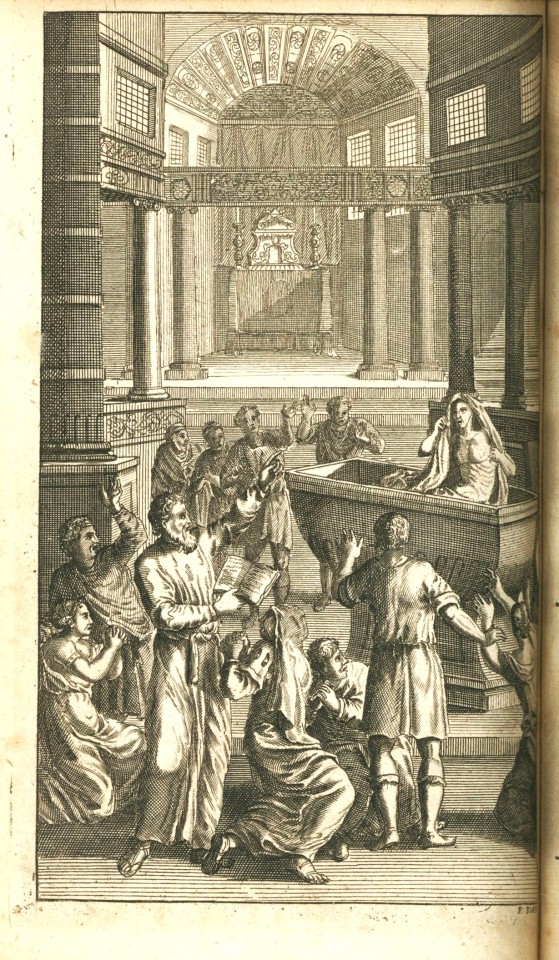





This weekend we are wrapping up Nicholas Rowe’s (1674-1718) The Work of Mr. William Shakespear; in Six Volumes. Published in London in 1709 by Jacob Tonson (1655–1736), this second edition holds an important place within Shakespearean publication history. The Work of Mr. William Shakespear; in Six Volumes is recognized as the first octavo edition, the first illustrated edition, the first critically edited edition, and the first to present a biography of the poet.
Volume six is a collection of Shakespeare’s tragedies and comedies including several plays that are a part of the Shakespeare apocrypha that bear Shakespeare’s name, but do not appear in the First Folio and of which there is question about his role in writing them. Apocrypha in the sixth volume include Pericles Prince of Tyre, London Prodigal, Thomas Lord Cromwell, Sir John Oldcastle, The Puritan, A Yorkshire Tragedy, and Locrine. Volume six also includes confirmed Shakespearean plays Antony and Cleopatra and Cymbeline.
A full-page engraving by the French Baroque artist and book illustrator François Boitard (1670-1715) and engraved by English engraver Elisha Kirkall (c.1682–1742) precedes each play. Boitard’s illustrations often place readers at the pinnacle of the plays depicting high drama in his classic Baroque style.
In addition to Rowe’s editorial decisions to divide the plays into scenes and include notes on the entrances and exits of the players, he also normalised the spelling of names and included a dramatis personae preceding each play. The only chronicled critique of Rowe’s momentous editorial endeavor is his choice in basing his text on the corrupt Fourth Folio.
View more volumes of The Works of Mr. William Shakespear; in Six Volumes here.
View more Shakespeare Weekend posts.
-Jenna, Special Collections Graduate Intern
#Shakespeare Weekend#william shakespeare#shakespeare#mr. william shakespear in six volumes#nicholas rowe#jacob tonson#Shakespeare apocrypha#apocrypha#francois boitard#elisha kirkall#antony and cleopatra#cymbeline#pericles prince of tyre#london prodigal#thomas lord cromwell#sir john oldcastle#the puritan#a yorkshire tragedy#locrine
44 notes
·
View notes
Note
Please tell me about your vision for Pericles
It's ENTIRELY about Marina. Idk if it'd be named Marina, Daughter of Pericles or Marina, Princess of Tyre or something else but Marina runs the show.
So Pericles went on a diplomatic mission to some other kingdoms. He wasn't on the run from the incest king or whatever and could return to his kingdom at any time. He meets his wife Thaisa, they marry, she gets pregnant and gives birth to Marina and Pericles is like "oh shit I have a kingdom to rule oh fuck" so they get on a boat to go back.
Huge storm. Absolutely massive. Completely wrecks the ship. Pericles, Marina, and Thaisa are the only ones who survive. BUT Thaisa isn't with them and is convinced that Pericles and Marina are dead and vice-versa.
Thaisa ends up in Ephesus and when the royal family (who is currently mourning the loss of their own child, who was stolen for ransom but was already gone by the time they gave the people the money) meet her she becomes the assistant to the queen there. This is because I love Twelfth Night.
Pericles washes up back in Tarsus (and the fact that he saved their kingdom is mentioned) and he's worried if he goes back to sea with Marina she'll die too so the royal family of Tarsus offer to take her in. Pericles fucks off back to Tyre.
When Marina is about five the queen of Tarsus gets jealous of Marina taking all the attention away from her own daughter (by being smarter and more likable) and so she hires her a new "tutor" who is actually an assassin.
Unfortunately for the queen, Marina is charismatic, even for a 5 year old, and the tutor just loves her. Teaches her how to fight, trains her in how to be or beat a knight, teaches her disguises and wit and pretty soon we have this 18 year old girl who is stronger than everyone and better than everyone.
The queen of Tarsus pays pirates to kill her and, being forewarned by her tutor, goes with them willingly until she convinces them to take her somewhere (she's not putting her cards on the table yet. If all the pirates die then Tarsus would know that she's alive)
They sell her to a whorehouse and once she's there she refuses to sleep with anyone. She scares the people who try to force her so badly that they swear off the whorehouse altogether. The pimps bring her to another prostitute who says that she's there willingly and Marina makes a comment about how staying there because you can't afford to leave isn't the same as being there willingly and suggests that she try saying no to the next John. She gives her a knife and we learn that she has been stealing the weapons of all the men who try to 'have' her. This other prostitute, let's call her Lysimus (yes she is the replacement for Lysimachus fuck that guy), does just that and has to defend herself agaisnt the John. When the Bawd tries to punish her, Marina protects her and threatens him that, unless they are allowed to leave, she will burn the whorehouse to the ground.
She gives the other prostitutes weapons and instruct them to "do as they please". Then she takes Lysimas off of Lesbos by dressing as a man and pretending she bought him.
(Lesbos ends up being taken over by the prostitutes and becomes a safe haven for women but we don't learn that until the end)
Pericles visits Tarsus and learns his daughter is dead. He returns to Tyre in mourning, refusing to speak. Meanwhile, Marina and Lysimus (who are implied to be in a relationship in the kind of way that takes base level media analysis, so it would get called queerbating on twitter) are traveling the world.
They end up in Ephesus where the castle is under siege. Marina takes the sword and armor of a fallen soldier and saves the day, saving the king, queen, and Thaisa. They celebrate her. Once they leave, the king and queen realize that their daughter also being named Lysimus might not be a coincidence and asks Thaisa to follow them.
Marina and Lysimus are going by ship to somewhere, doesn't really matter where. This time, when they get taken by pirates, Marina takes down the captain and takes over the ship, becoming the leader of the pirates until she learns about what's happening in Tyre.
She hears that tomorrow Tyre will be having a jousting competition to decide the new heir since Princess Marina has died. She decides that she needs to win and gives her first mate control of the ship after he takes Marina and Lysimus to Tyre.
Marina pretends to be a man to get into the competition, using armor that she'd found in the water when she was a pirate captain. Just before the last round (is that how jousing works?) Pericles' assistand asks who she is. She does the good old 'taking off the helmet' thing and announces that she is "Marina, Princess of Tyre, here to reclaim my birthright"
She wins obv and Pericles speaks for the first time in like a year to greet his daughter and it's adorable until a spy for Marina says that she and Lysimus had been getting followed and that the woman who has been tracking them is in Tyre.
It's Thaisa. Marina, Pericles, and her reunite and then she tells Lysimus that she may be princess of Ephesus and the four of them go to Ephesus. A priestess confirms that they are family and Marina and Lysimus decide that, when they are the leaders of the countries, they will be uniting their kingdoms (obvious metaphor for marriage that would also get called queerbating).
Story ends there with everyone finding out the fates of the other kingdoms. Lesbos is thriving under the leadership of the former prostitutes and the royal family of Tarsus was killed by pirates and the princess (who never did anything wrong) has taken over and she and Marina still see each other as sisters. All's well that ends well.
#thanks for the ask!#a#pericles#pericles prince of tyre#shakespeare#william shakespeare#my beloved william!!!! hail!!!!
22 notes
·
View notes
Note
hey there!! super thank you for your masterpost, it's amazing. I wanted to know if you (or maybe your followers?) have a lead on the Stratford festival's Pericles? My old acting professor had a DVD she bought when she saw it, but I can't locate it for the life of me. Many thanks!
I can't seem to find it...
However take this school play as a token of my apology, and the BBC one while we're at it, and why not the 2015 too.
7 notes
·
View notes
Text
3/16/2024-3/20/24: Pericles, Prince of Tyre
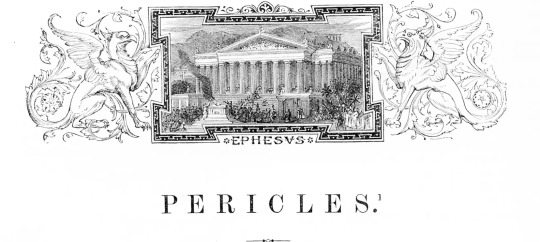
I want to say what an odd play this is. But I just watched Poor Things, and the standards of weirdness have really changed over the past 400 years.
What stood out to me as I read Pericles was that the author (or authors, as I buy the argument that the first two acts were by someone other than Shakespeare) is pushing against the limitations of the form. The stages of the day had minimal set dressing and costuming, right? That's why in Julius Caesar, there's a reference to a doublet. So when the scene moves, it has to be conveyed in dialogue or through a stage convention like "Everyone holding up torches means that it's night."
But Pericles takes fourteen years to play out. Pericles (the man, not the play) goes all over the place, getting into multiple shipwrecks and so on. So the way they have to convey where the next scene is is by having a narrator character (Gower) just come out and say:
We left him on the sea. We there him lost, Whence, driven before the winds, he is arrived Here where his daughter dwells, and on this coast Suppose him now at anchor. The city strived God Neptune's annual feast to keep, from whence Lysimachus our Tyrian ship espies, His banners sable, trimmed with rich expense; And to him in his barge with fervour hies. In your supposing once more put your sight; Of heavy Pericles, think this his barque, Where what is done in action, more if might Shall be discovered. Please you sit and hark.
See, because they weren't yet making the stage actually look like a ship with banners sable and so forth, they had to essentially have the voiceover explain what the audience should be seeing. This is after Gower has covered a lot of the plot that also wouldn't fit on stage.
Earlier, it's even more direct:
GOWER Patience then, And think you now are all in Mytilene.
Shakespeare just wants a caption to appear on screen, telling people where they are. Sadly for him, the technology won't be invented for quite some time. And I guess the audiences weren't ready for lines like "Well, here we are in Myteline" every other scene. It's a very sweeping story, and I don't think it quite fits into the strictures of Jacobean theatre.
Also, about those shipwrecks...Shakespeare sure does love shipwrecks, huh? Pericles survives two in this play, and in one we have the classic bit where people are separated and both assume the other is dead until they miraculously reunite in the fifth act. Already saw that in both The Comedy of Errors AND Twelfth Night! And I haven't even reached The Tempest yet.
I guess by my metric this is a Tragedy, since the play is named after a character in it. And Pericles goes through an awful lot of hardships, but he does end up okay at the end.
Finally, I would like to say that if you are sleeping with your daughter (like Antiochus at the beginning of the play) and making suitors answer riddles for the chance to woo her...maybe don't make the riddle be so transparently about the fact that you're sleeping with your daughter. That was bound to blow up in his face eventually.
Next up: Coriolanus
0 notes
Text

21 notes
·
View notes
Text
Shakespeare Genre Battle: Comedies 2
I'm doing all of them. Don't worry if yours isn't in this poll.
I am including some things with disputed authorship, collaboration, or apocrypha just because.
#Shakespeare#Twelfth Night#The Winter's Tale#Pericles#Prince of Tyre#The Two Noble Kinsmen#The London Prodigal#All's Well That Ends Well#The Taming of the Shrew#As You Like It
25 notes
·
View notes
Text
ultimate shakespeare play tournament


#william shakespeare#polls#poll tournament#reblog for sample size#Pericles#Prince of Tyre#Much Ado About Nothing
3 notes
·
View notes
Text
387 notes
·
View notes
Note
Pericles is SUCH a fun play! Very underread and underperformed.
having now seen the play and been in three different readings, i concur
3 notes
·
View notes
Text
i realise i never actually posted my shakespeare gay sex powerpoint here so i’m gonna share the rankings thumbsupemoji
here’s how much each shakespeare play would get improved by gay sex but WITHOUT the explanations.
10/10 (the winners)
- love’s labour’s lost - romeo and juliet - a midsummer night’s dream - hamlet - twelfth night - troilus and cressida - coriolanus - the tempest
9/10
- henry vi part 3 - the merchant of venice - julius caesar - pericles, prince of tyre
8/10
- titus andronicus - comedy of errors - henry iv part 1
7/10
- the taming of the shrew - richard ii (this is only because i saw a boring production once. im sure its actually great gay) - henry iv part 2 - henry v - king lear - antony and cleopatra - cymbeline
6/10
- henry vi part 2 - richard iii - king john - macbeth
5/10
- the merry wives of windsor - as you like it - henry viii
4/10
- henry vi part 1
3/10
- the two gentlemen of verona - othello (im standing by this one <3)
1/10 (there are no 2/10s)
- measure for measure - the winter’s tale
0/10
- the two noble kinsmen
-8/10
- all’s well that ends well
and an honourable mention to the much ado about nothing rank:

i am open for questions. godspeed
#shakespeare#shakespeare plays#loves labours lost#romeo and juliet#a midsummer night's dream#hamlet#twelfth night#troilus and cressida#coriolanus#the tempest#much ado about nothing#macbooth original
240 notes
·
View notes
Text
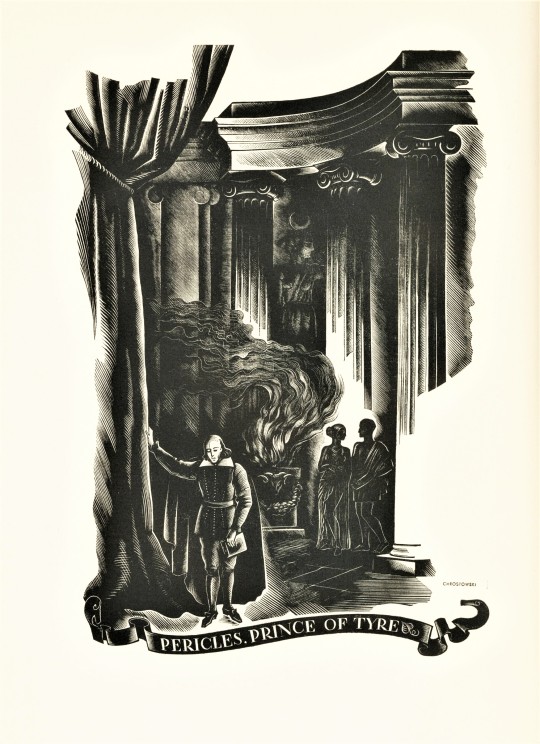
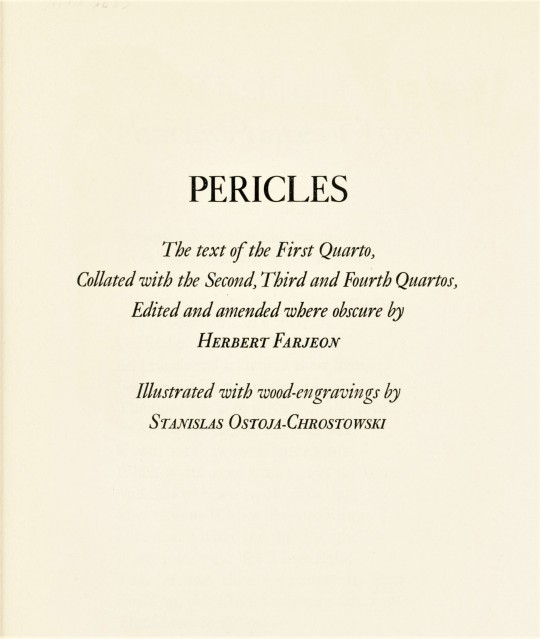

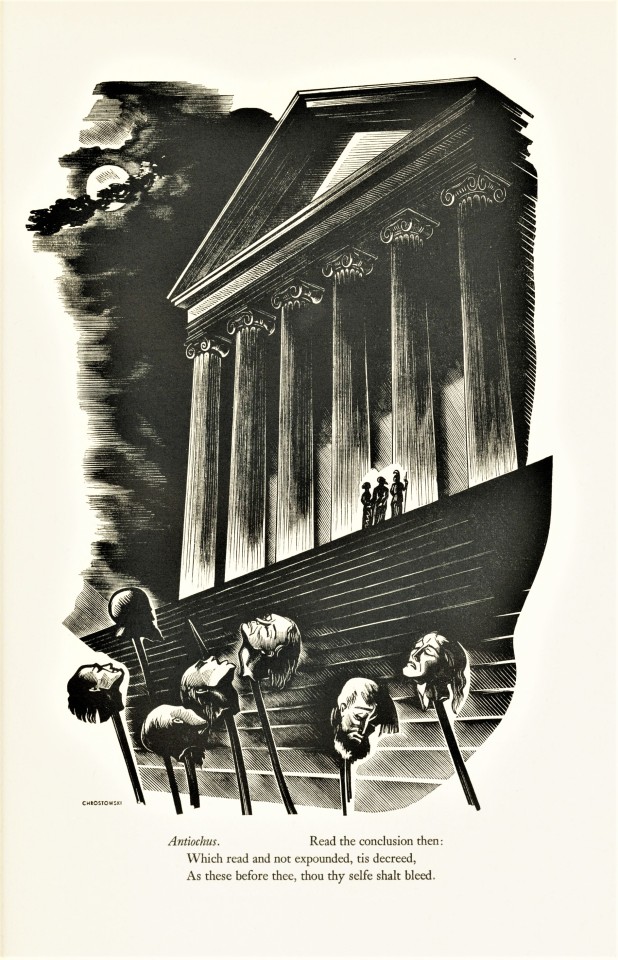
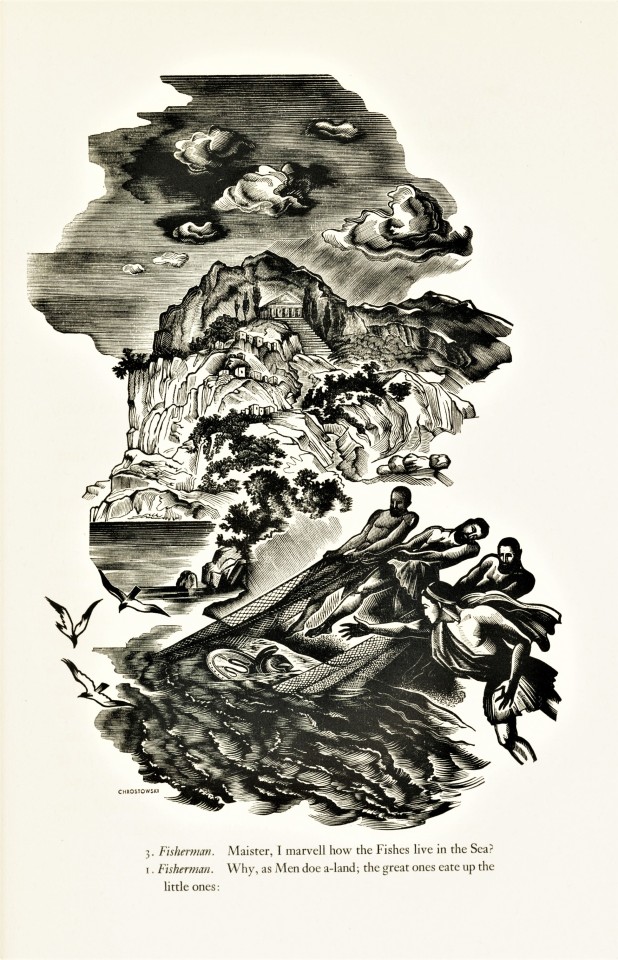
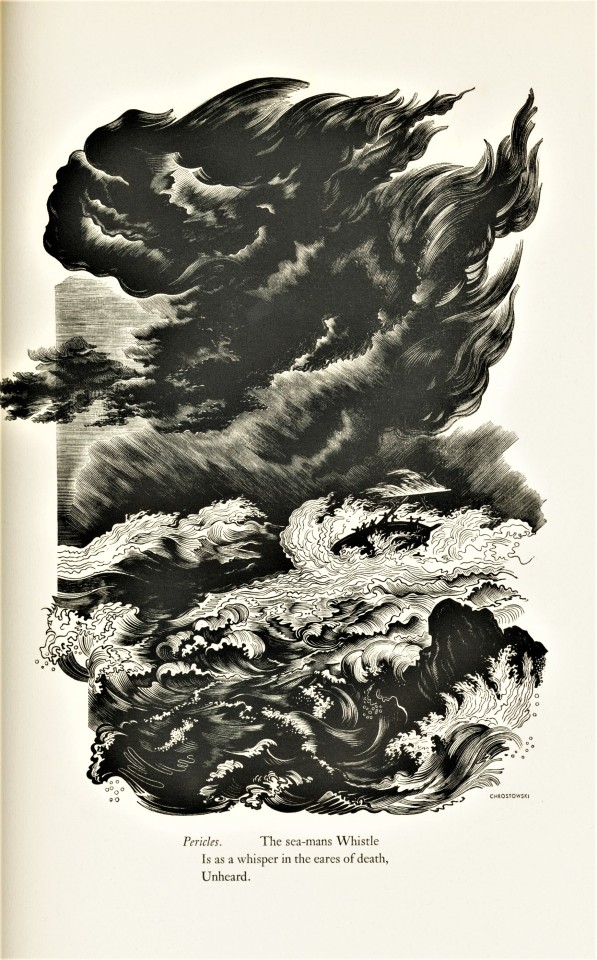
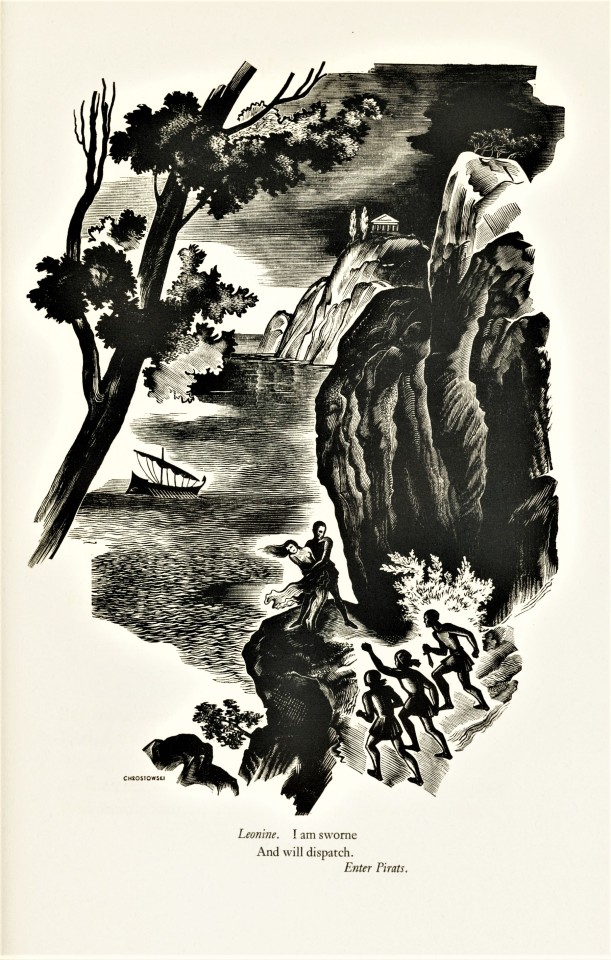
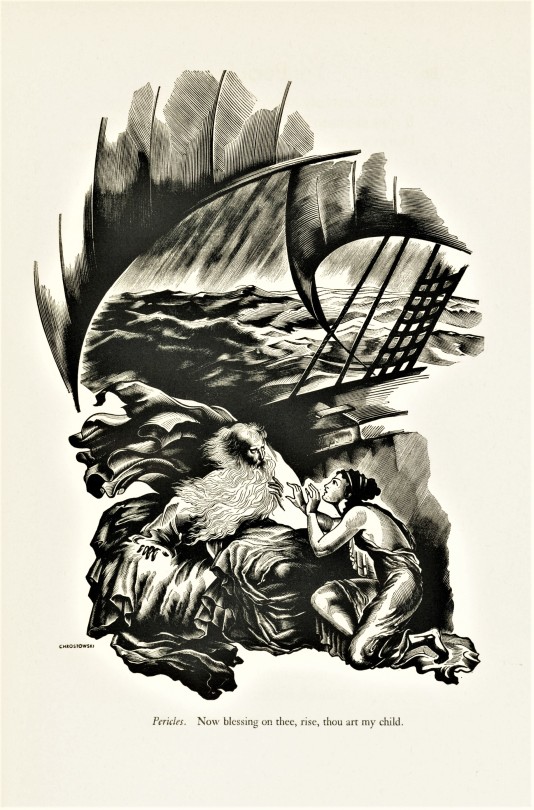
Shakespeare Weekend!
This weekend we explore Shakespeare’s romantic drama, Pericles, Prince of Tyre, the twenty-eighth volume of the thirty-seven volume The Comedies Histories & Tragedies of William Shakespeare, published by the Limited Editions Club (LEC) from 1939-1940. It is widely acknowledged that Shakespeare was likely not the sole author of Pericles, Prince of Tyre and while it was published in quarto in 1609 by stationer Henry Gosson with Shakespeare’s name on the title page, it was not included in his works until the Third Folio of 1663. Most scholars believe that Pericles, Prince of Tyre was written in 1607 or early 1608 and co-authored by pamphleteer George Wilkins.
This edition of Pericles, Prince of Tyre was illustrated with wood-engravings by Polish artist Stanislas Ostoja-Chrostowski (1900-1947). Chrostowski studied at the Warsaw Academy of Fine Arts, received a bronze medal in the 1936 Summer Olympics Art Competition for commercial graphic art painting, and was active in the intelligence department of the World War II Polish resistance movement Home Army. He was regarded as the leading wood-engraver of his nation and was known for illustrating several Polish classics and numerous children’s books. The LEC writes of Chrostowski’s work that “whole textures are created by his tools, and the resulting prints seem to have more color than just the color of black ink.” Indeed, his precise and vivid engravings storm off the page to match the dramatic tenor of the play.
The volume was printed in an edition of 1950 copies at the Press of A. Colish. Each of the LEC volumes of Shakespeare’s works are illustrated by a different artist, but the unifying factor is that all volumes were designed by famed book and type designer Bruce Rogers and edited by the British theatre professional and Shakespeare specialist Herbert Farjeon. Our copy is number 1113, the number for long-standing LEC member Austin Fredric Lutter of Waukesha, Wisconsin.
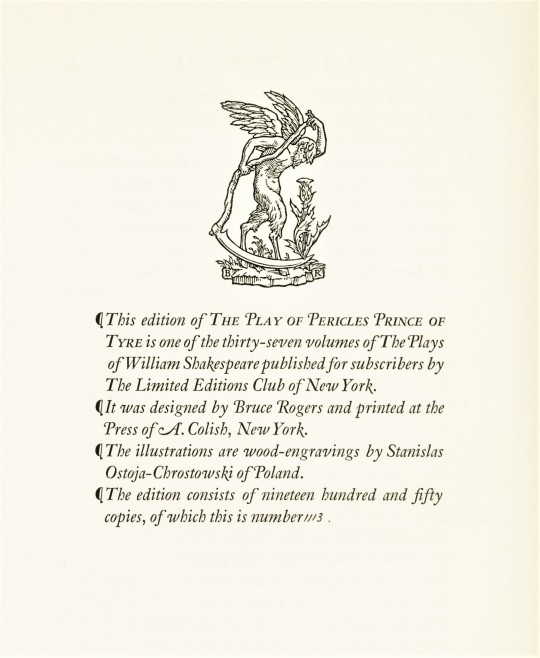
View more Limited Edition Club posts.
View more Shakespeare Weekend posts.
View more posts with wood engravings!
-Jenna, Special Collections Graduate Intern
#Shakespeare Weekend#William Shakespeare#Pericles Prince of Tyre#Stanislas Ostoja Chrostowski#LEC#Limited Editions Club#Press of A. Colish#Bruce Rogers#Herbert Farjeon#Wood Engraving#wood engravers#severed heads
32 notes
·
View notes
Text
Shakespeare poll tag, for all the different genres!
84 notes
·
View notes
Text
Historia Apollonii regis Tyri
The original source of this story is lost, but it’s believed to have been a Greek text originally composed Syria around the 3rd Century A.D., which was translated into Latin either or 5th or the 6th Century. This theorized Latin translation also would have changed passages such as the riddle spoken by Antiochus and perhaps the recognition scene between Apollonius and his daughter.
The story was so famous that 114 Latin manuscript survive to this day, as well as many vernacular ones. Few of those manuscripts are identical, and there tends to be two major versions, which scholars call RA and RB, with RB using a more classically correct Latin and having extra details and names, despite also being a shorter narrative.
It was translated to English as early as the 11th century, but the most diffused version was the one by John Gower in his Confessio Amantis of 1390. Other vernacular versions exists, such as the 13th Century Danish balled called Kong Apollon af Tyre; the Old Norse tale Thidreks Saga af Ber, which feature Apollonius as the son of King Arthur and the Spanish, and very Christianized, Libro de Apolonio, among many others. More famously, it was adapted by Shakespeare into the play Pericles, in 1609.
For Shakespeare's version of the story, please check my Pericles post.
Historia Apollonii regis Tyri, by Unknown
The story of Apollonius of Tyre begins with the titular hero visiting a land ruled by King Antiochus, who has an incestuous affair with his daughter. The daughter is said to have initially resisted his advances, even thinking of killing herself, before being persuaded to lay with her father by the maids.
Antiochus, perhaps to disguise his affair with his daughter, announced that only the one who can solde his riddle will marry the princess. All those who fail are beheaded. When it comes to Apollonius turn, he realises that the riddle is about the incestuous affair, and knowing that this knowledge would lead to Antiochus wanting him dead, Apollonius he runs from the kingdom. Indeed, Antiochus sends an assassin after him, which forcers Apollonius to leave Tyre, where he ruled.
He eventually arrives in Cyrene, where princess becomes so infatuated with him that they marry, despite Apollonius not being a king anymore. After the marriage, Apollonius learns that Antiochus and his daughter have been killed by a thunderbolt, and that the throne of Antioch is to be given to him.
He and his wife set off to claim the throne, but she seemingly dies during childbirth in a stormy night. Her corpse is put to the sea, and she is later found by a doctor and becomes a priest of Diana.
Apollonius, who is heartbroken, leaves his new-born to be taken care by foster parents, while he goes to Egypt trying to make money. When the daughter, Tarsia, gets older, the foster parents try to kill her, but instead of dying, Tarsia gets kidnapped by pirates and finds herself in a brothel, where a prince becomes enamoured with her.
Tarsia manages to leave the brother and become a musician. Apollonius hears of his daughter's death and becomes even more depressed. He goes to Mitylene where a friend of his hires a entertainer to cheer him up. The entertainer tells him of her sad story and is revealed to be Tarsia, his daughter. Then, miraculously, Apollonius receives a dream of his wife's location and the whole family is reunited.
This outline remains more of less consistent across the manuscripts, however, the reunion scene sometimes happens at the brothel, which Apollonius being an intended client of Tarsia before discovering that she's his daughter, which allows then to void incest. The theme of father and daughters (more specifically, how the fathers treat their daughters) is recurring through the play, with Apollonius and Antiochus being complete opposite.
Book VI, Chapter VIII of Carmina, by Venantius Fortunatus
Composed in the second half of the 6th Century, this is the oldest known mention of Apollonius, merely citing him as someone who survived a shipwreck. No mention is made of Antiochus or his daughter. However, the casual mention of Apollonius’ name indicated that the audience would have been familiar with the his tale.
Gesta Apollonii
This version is in metric verse and probably dates to the 10th Century. The text only goes as far as the 8th chapter (out of 51), which is shortly after Apollonius flees Antioch, which means this is the oldest mention of Antiochus committing incest with his daughter.
And those passages don't paint a consensual relationship. One part says "he violated the virgin with his raging lust" (The original verb here, rumpit can be translated in many ways, due to sexual context of the passage, I chose 'violate'), and later that "because of the wicked act committed there, the bed was left polluted."
Pantheon, by Godfrey of Viterbo
The version in Pantheon, from the 12th Century A.D. Missing from this edition is the riddle that Apollonius solves (he merely gives the answer to it) and much of Tarsia's adventure (such as the scene of her pleading for her innocence at the brothel). Godfrey also places the story in a historical context, allegedly having happened after the death of Alexander the Great, but before the Punic Wars.
Once again, the daughter of Antiochus is described as distraught over the situation she finds herself with her father.
Apollonius of Tyre, Book VIII of Confessio Amantis, by John Gower
Confessio Amantis is a extremely long poem written between 1386 and 1390 by John Gower. The poem is a frame narrative, with an old man telling the many stories to a priest of Venus. None of the stories featured in it are original works of Gower, with the majority of them coming from Ovid.
Apollonius of Tyre shows up in Book VIII, which concerns itself with the sin of lechery (lust), and more specifically, with incestuous lust.
This story also goes with the rape version, with the introduction saying (in Latin, because people on the 1390′s were pretentious like that and everything had to have an introduction in badly written Latin):
“Here he speaks against incestuous coitus of lovers, and narrate the marvelous example of the Great King Antiochus, who after his wife died, violated his own daughter […]”
The Pattern of Painful Adventures by Laurence Twine
This version was written by Laurence Twine in 1576, and is mostly a English translation of Gower’s version in Confessio Amantis. It seems to be the version from which Wilkins drew inspiration, for the text closely resembles his. In this version, Antiochus also rapes his daughter.
“Wherefore not long after on a certain day he came into his daughter’s chamber, and, bidding all that were there for to depart as though he had had some secret matter to confer with her, the furious rage of lust pricking him forward thereunto, he violently forced her – though, seely maiden, she withstood him long to her power – and threw away all regard of his own honesty and unloosed the knot of her virginity.”
The riddle Apollonius has to solve is different, with the version from Pericles likely having been altered by Shakespeare.
“I am carried with mischief; I eat my mother’s flesh; I seek my brother, my mother’s husband, and I cannot find him.”
In this version, the King and Princess are also killed by lightning: “King Antiochus and his daughter are struck dead with lightning from heaven.”
References:
Archibald, Elizabeth. Apollonius of Tyre : Medieval and Renaissance Themes and Variations: Including the Text of the Historia Apollonii Regis Tyri with an English Translation. D.S. Brewer / Boydell & Brewer, 1991.
#Father x Daughter#antiochus and daughter#canon#book review#greek mythology#confessio amantis#john gower#Apollonius of Tyre#historia apollonii regis tyri#parentcest#parent x child#filicest
3 notes
·
View notes
